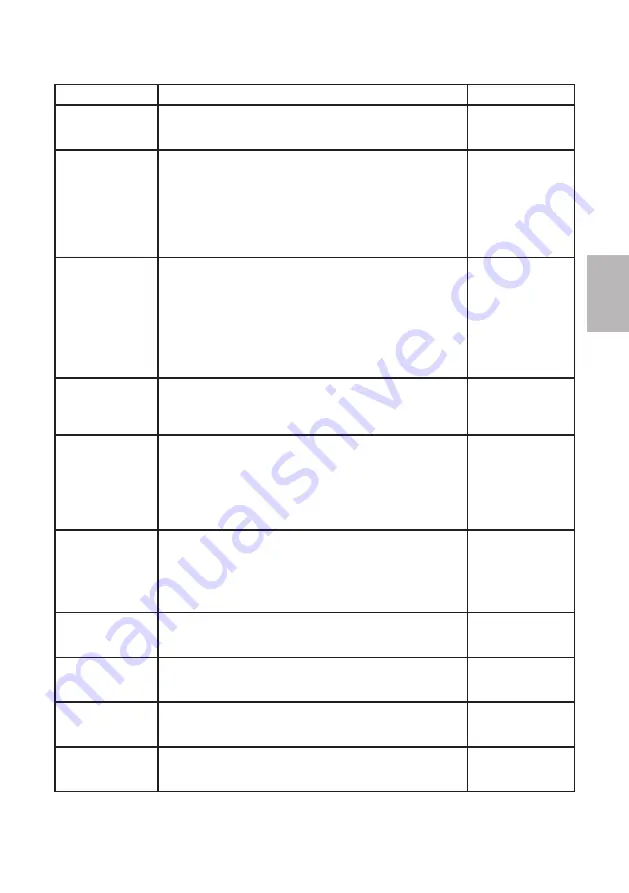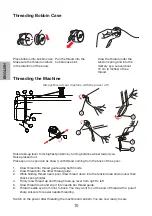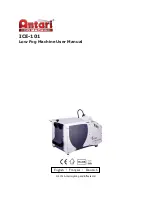
Trouble Shooting
Condition
Cause
Reference
the machine does
not run smoothly
and is noisy.
1.
threads have been caught in hook mechanism.
2.
the feed dog is packed with lint.
see page 22
the needle thread
breaks.
1.
the needle thread is not threaded properly.
2.
the needle thread tension is too tight.
3.
the needle is bent or blunt.
4.
the needle is incorrectly inserted.
5.
the fabric is not being drawn to the back when sewing
is finished.
6.
the thread is either to heavy or to fine for the needle.
see page 10
see page 8
see page 8
see page 8
see page 14
see page 8
the needle breaks
1.
the needle is incorrectly inserted.
2.
the needle is bent or blunt.
3.
the needle clamp screw is loose.
4.
the tension of the needle thread is to tight.
5.
the fabric is not being drawn to the back when sewing
is finished.
6.
the needle is to fine for the fabric being sewn
7.
the stitch selector has been turned while the needle
was in the material
see page 8
see page 8
see page 8
see page 11
see page 8
see page 12
see page 12
the bobbin thread
breaks
1.
the bobbin thread is not threaded properly in the bobbin case.
2.
lint has collected in the bobbin case.
3.
the bobbin is damaged and doesn’t turn smoothly.
see page 10
clean the bobbin case
exchange the
bobbin
skipped stitches
1.
the needle is incorrectly inserted.
2.
the needle is bent or blunt.
3.
the needle and/or threads are not suitable for the work
being sewn.
4.
a Ball pOint needle is not being used for sewing
stretch, very fine fabrics and synthetics.
5.
the needle thread is not threaded properly.
see page 8
see page 8
see page 8
see page 8
see page 10
seam puckering
1.
the needle thread tension is too tight.
2.
the machine is not threaded correctly.
3.
the needle is too heavy for the cloth being sewn.
4.
the stitches are too long for the fabric being sewn.
When sewing extremely light weight materials, place a
sheet of tissue/paper underneath the fabric.
see page 11
see page 10
see page 8
Make the stitches
smaller!
stitches
form loops
below the work.
1.
the needle thread tension is too loose.
2.
the needle is either too heavy or too fine for the thread.
see page 11
see page 8
the cloth is not
feeding smoothly.
1.
the feed dog is packed with lint.
2.
the stitches are too fine.
see page 22
Make the stitches
longer!
the machine
does not work.
1.
the machine is not plugged in.
2.
a thread is caught in the hood race.
3.
clutch knob is disengaged for the bobbin winding.
see page 6
see page 21
see page 9
the buttonhole
stitches are not
balanced.
1.
stitch length is not suitable for the fabric being sewn.
2.
the work is being pulled or held back.
see page 12
Do not force the
fabric guiding
23
E
N
g
LiS
h
















































